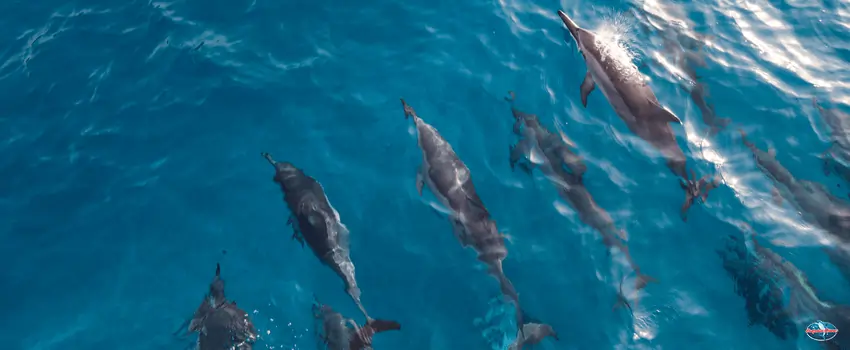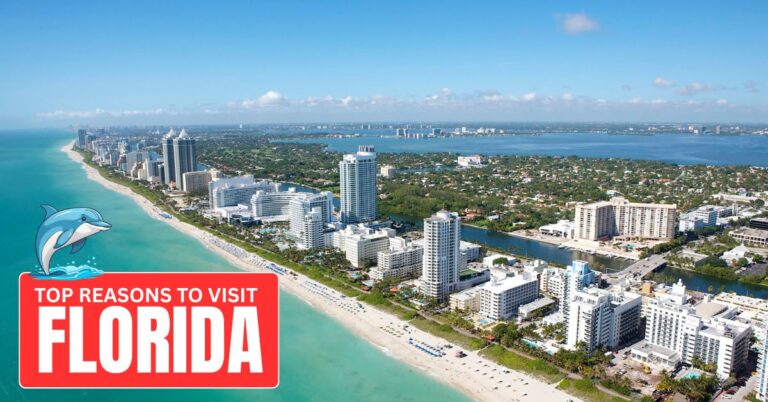The bottlenose dolphin, like certain species of birds and elderly New Yorkers, follows the Atlantic coast in search of warmth. The bottlenose dolphin migration route varies, influenced by several key factors. Migration is crucial for survival as the seasons change. But what makes a dolphin turn tail and travel from one place to the next? St. Petersburg’s Boca Ciega Bay hosts its own pod of bottlenose dolphins. Their cousin’s migratory route offers a fascinating glimpse into the life of the coast’s most playful mammal.
Where the Dolphins Call Home
Boca Ciega Bay hosts a rich assortment of wildlife, from the gentle manatee to the occasional fish. The bay was designated as an aquatic preserve in 1968 and is home to mangrove islands, oyster beds, and miles of canals. Spring-fed caves litter the bay, where sea life finds refuge from troubled waters. Bottlenose dolphins living within the bay are separate from those found in the connected Gulf of Mexico.
More than 40,000 dolphins live in the Gulf of Mexico. In the whole of Tampa Bay, there are an estimated 550. Unlike dolphins living along the Atlantic coast, dolphins that live in the Gulf don’t need to migrate since the waters are warm enough.
Both Coasts of the United States host bottlenose dolphins; along the Atlantic, the bottlenose dolphins live in waters from New York to the Florida Keys. The resident dolphins in Boca Ciega Bay remain year-round regardless of the season while the Atlantic coastal bottlenose dolphins arrive from up north in the fall and winter to escape frigid temperatures. This sets the dolphins of Boca Ciega Bay apart, which are homebodies by comparison.
However, not all dolphins migrate. Much depends on the weather and temperature of the water. When water temperatures drop, dolphins in the north move south. These dolphins find a winter home in the Florida Keys for the most part.
Coastal vs. Offshore Dolphins
Bottlenose dolphins can fall into two categories: coastal and offshore. The coastal dolphin rarely leaves an area within five miles of the coast. These dolphins are slimmer than their offshore counterparts. Reaching up to eight feet in length, the coastal dolphin hunt in seagrass and sand. Residing closer to the coastline means that temperature variations affect a dolphin’s lifestyle more than it does for an offshore dolphin.
An offshore bottlenose dolphin is built differently. Reaching up to 14 feet in length, an offshore dolphin can weigh as much as 1,000 pounds. They are also darker in color, adaptations that give the offshore dolphins a leg up in colder temperatures.
Offshore dolphins migrate for a number of reasons and have a wider range of places to call home. Bottlenose dolphins living near the coast tend to collect in larger numbers than offshore dolphins. Coastal dolphins tend to remain near the coast, limiting their range to a particular area—such as Boca Ciega Bay.
Offshore Dolphins and Migration
Unlike their spoiled brethren, the coastal bottlenose dolphin, the offshore dolphin follows prey. Migration often occurs in tandem with the migration of certain food sources. In a study published by the Journal of Mammalogy in 2007, authors Klatsky, Wells, and Sweeney studied the movement of migratory vs. nonmigratory dolphins and compared speed and distance traveled.
Non-migrating dolphins in Tampa Bay traveled upward of 24 kilometers per day, according to the study. Migratory dolphins travel 32 kilometers per day, while some exceed this average by 50 kilometers or more per day. The authors theorize that the migratory dolphins’ speed coincided with their prey’s behavior. Squid, shrimp, and lanternfish move from coastal waters to offshore waters for a day, and dolphins follow. As they migrate south, a bottlenose dolphin may need speed to catch a bite to eat.
November and December give the best opportunities to catch a dolphin sighting off the coast of North Carolina and Virginia; the bottlenose dolphin migration route from the north to Florida tends to be the same year-round. Yet not all dolphins migrate; those that choose to remain are, more often than not, coastal dolphins.
Do Dolphins Change with the Seasons?
Bottlenose dolphin characteristics vary depending on the stock to distinguish dolphin pods. From the bottlenose dolphin migration route to a dolphin’s diet, habitat plays a key role in shaping these marine mammals.
The migratory period for the bottlenose dolphin leaves no significant impact on the animal. A slim dolphin in the summertime will be slim in the winter. There is one significant difference, a familiar feature for humanity around the holidays.
For both migratory and nonmigratory dolphins, developing a protective layer of blubber is an important part of winter survival. Dolphins increase their caloric intake to build up this layer as temperatures drop. A bottlenose dolphin keen on developing a summer body will shed the excess weight when the summer months come around.
Migration and Tourism in Tampa Bay
As luck would have it, the Tampa Bay dolphins stay put for the holidays. This attracts visitors from around the globe who hope to catch a glimpse of these mirthful sea creatures. Facts about dolphins are aplenty. The most important fact for the tourism industry at John’s Pass is that the dolphins enjoy the warm waters enough to stick around.
Year-round, the waters in Tampa Bay remain warm enough for dolphins to live. As ocean temperatures increase due to global warming, dolphins and other marine wildlife are at risk. As temperatures rise, fish and other creatures dolphins rely on for food migrate to cooler waters. This puts the bottlenose dolphins in a bind, as they cannot follow prey into the deeper, offshore waters.
For now, the resident dolphins of Tampa Bay visit John’s Pass to the delight of locals and visitors alike. Get up close and personal with the bottlenose dolphins aboard the best dolphin cruise in Madeira Beach. The Dolphin Quest or Shark Boat Eco-educational tour departs daily from St. Petersburg, Florida, to take guests out and see these fascinating creatures.
Enjoy their feats and witness their migration. Contact us today.











